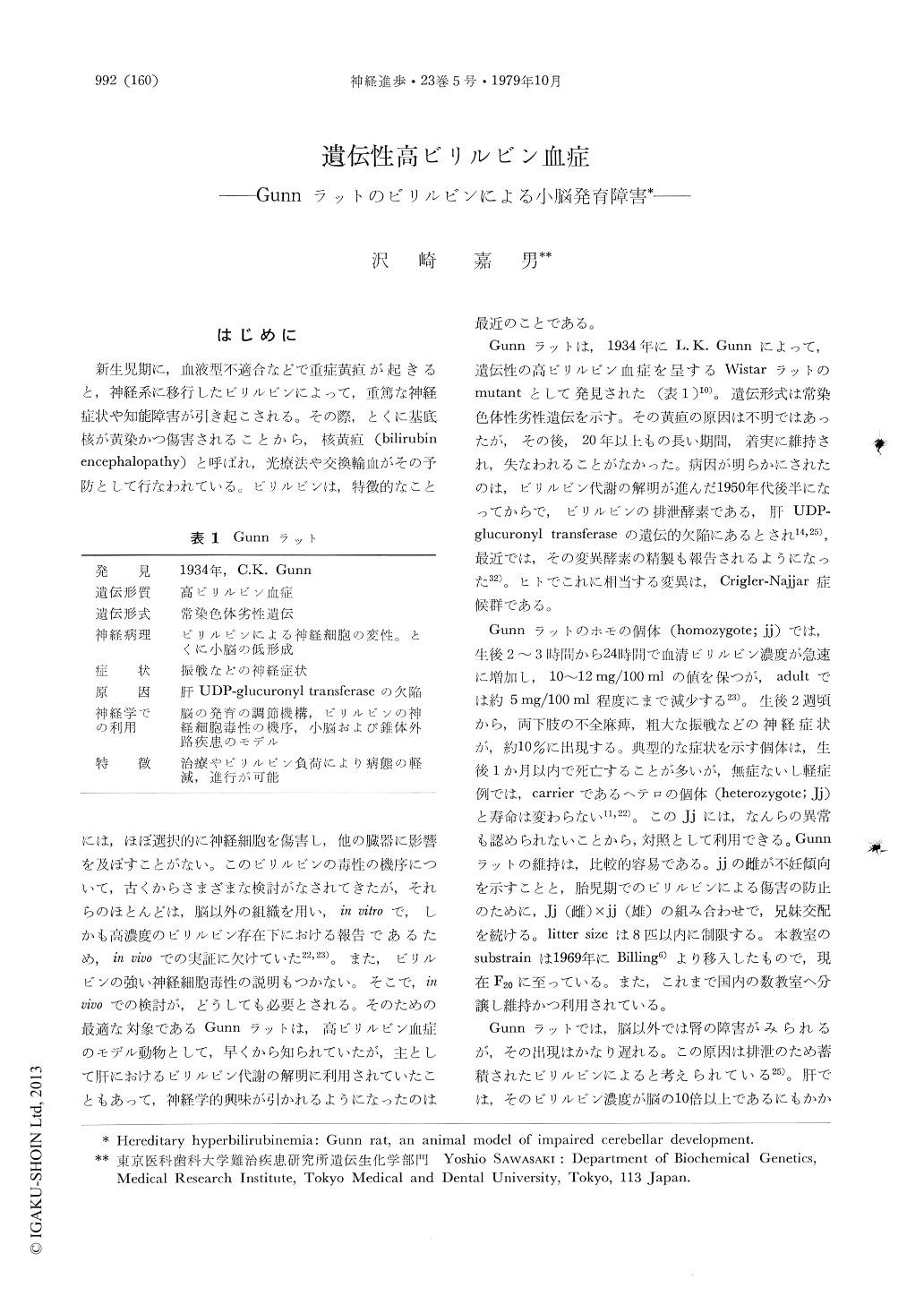Japanese
English
- 有料閲覧
- Abstract 文献概要
- 1ページ目 Look Inside
はじめに
新生児期に,血液型不適合などで重症黄疸が起きると,神経系に移行したビリルビンによって,重篤な神経症状や知能障害が引き起こされる。その際,とくに基底核が黄染かつ傷害されることから,核黄疸(bilirubinencephalopathy)と呼ばれ,光療法や交換輸血がその予防として行なわれている。ビリルビンは,特徴的なことには,ほぼ選択的に神経細胞を傷害し,他の臓器に影響を及ぼすことがない。このビリルビンの毒性の機序について,古くからさまざまな検討がなされてきたが,それらのほとんどは,脳以外の組織を用い,in vitroで,しかも高濃度のビリルビン存在下における報告であるため,in vivoでの実証に欠けていた22,23)。また,ビリルビンの強い神経細胞毒性の説明もつかない。そこで,in vivoでの検討が,どうしても必要とされる。そのための最適な対象であるGunnラットは,高ビリルビン血症のモデル動物として,早くから知られていたが,主として肝におけるビリルビン代謝の解明に利用されていたこともあって,神経学的興味が引かれるようになったのは最近のことである。
Gunnラットは,1934年にL.K.Gunnによって,遺伝性の高ビリルビン血症を呈するWistarラットのmutantとして発見された(表1)10)。遺伝形式は常染色体性劣性遺伝を示す。
Abstract
Bilirubin encephalopathy (kernicterus) induces neurological dysfunction and mental retardation. It is unclear why bilirubin is selectively toxic for the CNS, especially for certain nerve cells. To study such a neurotoxicity of bilirubin, the investigation in in vivo situation may be indispensable.
Kernicterus is also observed in Gunn rat. This mutant strain of Wistar rat shows autosomal recessive hereditary hyperbilirubinemia due to the defect in hepatic UDP-glucuronyltransferase. Shortly after birth, Gunn rat develops permanent jaundice and exhibits various neurological signs.

Copyright © 1979, Igaku-Shoin Ltd. All rights reserved.


